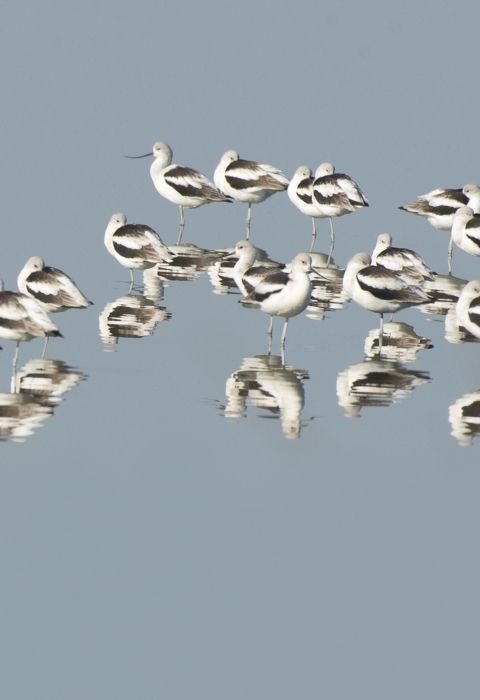What We Do
Wildlife conservation is at the heart of the National Wildlife Refuge System. It drives everything on U.S. Fish and Wildlife Service lands and waters managed within the Refuge System, from the purposes for which a national wildlife refuge national wildlife refuge
A national wildlife refuge is typically a contiguous area of land and water managed by the U.S. Fish and Wildlife Service for the conservation and, where appropriate, restoration of fish, wildlife and plant resources and their habitats for the benefit of present and future generations of Americans.
Learn more about national wildlife refuge is established to the recreational activities offered to the resource management tools used. Using conservation best practices, the Refuge System manages Service lands and waters to help ensure the survival of native wildlife species. Pea Island NWR uses prescribed fire to enhance safety in case of a future wildfire, control vegetation, and create more desirable habitats for migratory birds. The refuge also manages the water levels on three brackish impoundments to provide high-quality wildlife food and habitat.
Management and Conservation
Refuges deploy a host of scientifically sound management tools to address biological challenges. These tools span active water management to wilderness character monitoring, all aimed at ensuring a balanced conservation approach to benefit both wildlife and people. At this field station our conservation tool box includes:
- Planning – Comprehensive Conservation Plan
- Climate Resilience
- Compatibility Determinations
- Education & Outreach
- Fire Management
- Invasive Species
- Inventory and Monitoring
- Law Enforcement
- Pesticide Management
- Recreation Management
- Species Research
- Water Management
Our Projects and Research
A number of scientific research projects occur on Pea Island NWR, including:
Highway Vulnerability and Coastal Monitoring:
This project is part of an ongoing collaborative effort with NC Department of Transportation, Eastern Carolina University, and North Carolina State University examining coastal geomorphology and shoreline change. The research aims to look at how changes to beaches from beach nourishment, such as differences in grain size and mineralogical composition, impact microinvertebrate populations and seabird foraging success.
DUNEX Coastal Resiliency and Overwash Study
The DUring Nearshore Event eXperiment (DUNEX) is an aggregation of multiple scientific organizations collaborating to increase understanding of nearshore processes on barrier islands. The U.S. Geological Survey is investigating and characterizing the magnitude and timing of changes to coastal morphology (i.e., dunes, shorelines), bathymetry, and landcover after a storm on a natural, or low human impacted coastline. Measurements will include times series photography capturing sediment movement, offshore acoustic instrumentation measuring waves and currents, and topographic and bathymetric surveys of the beach and intertidal zone. The data acquired will contribute to creating models to predict future impacts from coastal storms.
Motus Wildlife Tracking Tower
The Motus wildlife tracking system is a collaborative research network using coordinated, automated radio telemetry arrays to study movements of small animals. Receivers in Motus towers automatically record the radio signals from radio-tagged wildlife present nearby. Thousands of researchers use the network of 1,250+ Motus towers to study species from bats to albatrosses. Pea Island NWR hosts a Motus tower at the Visitors Center, which will record signals from any and all Motus-tagged wildlife nearby, contributing to hundreds of ongoing research projects. More information can be found at https://motus.org/.
Other projects on the refuge include:
- Shorebirds and colonial waterbird surveys and nesting success (in partnership with Virginia Tech, Audubon)
- Impacts of beach nourishment (in partnership with ECU)
- Saltwater tolerance of tree frogs (in partnership with ECU)
- Sea turtle habitat use and nesting success (in partnership with NCWRC, NEST)
- Black duck nesting success (in partnership with NCWRC, U of Delaware)
- Scavenger community composition surveys & carbon processing (in partnership with UNC)

